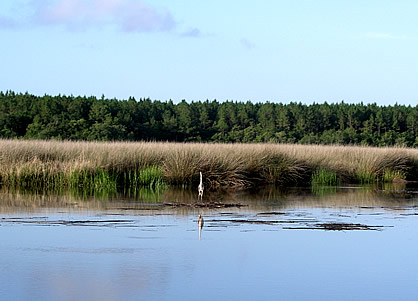There is a place, not far from here, that I have dreamed of visiting for more than four years now. St. Catherine’s Island is another of Georgia’s barrier islands but this particular island is not open to the public.
It has been inhabited for 4,000 years and was the site of the first Spanish outpost back in the 1500’s. The island was home to the Guale Indians during the 1500 and 1600’s. In 1766 Button Gwinnett, a signer of the Declaration of Independence, purchased St. Catherine’s and ran the island as a plantation until the end of the Civil War. The huge hurricane that hit the Sea Island’s in 1893 caused catastrophic destruction when sea water washed over the entire area, destroying all of the buildings. Only one survivor lived through that storm.
It is a beautiful place, 10 miles in length and 3-5 miles in width. Lush island foliage can be found over much of the 14,640 acres as well as marshland.
The wildlife is what interests me most! When I heard that wild Lemurs inhabit St. Catherine’s I began my wish to visit. The island is now owned by the St. Catherine’s Island Foundation, a non-profit group, that operates the island interior for charitable, scientific, literary, and educational purposes. The Foundation is concerned with conservation of natural resources and preservation of endangered species. Thus the colony of ring-tailed Lemur’s you’ll see running happily about the island if you are lucky enough to visit.
The Sherpa Guide has this to say about the wildlife that finds a safe harbor on St. Catherine’s: The island has a variety of subtropical ecosystems that are naturally adapted to the management of endangered species from similar climates around the world, which has led to the establishment of the St. Catherines Island Wildlife Survival Center. Begun in 1974 by the New York Zoological Society with a pilot project of 10 gemsboks in a 5-acre pasture, the program has captively bred many exotic species of birds, mammals, and reptiles. The island serves as a type of Noah’s Ark, where breeding colonies can be established to build up numbers of the rare animals, which are then returned to zoos or the wild. Some of the animals that have been raised and protected on the island include Grevy’s zebras, ring-tailed lemurs, dama gazelles, St. Vincent parrots, rhinoceros hornbills, Aldabra tortoises (a very rare tortoise related to the Galapagos tortoise), Florida sandhill cranes, and Jackson’s hartebeests. More than 14 zoos participate in the program.
I’m researching the island, its history and how to have the opportunity to spend a day there. If you have that information, please share it with me! I’d love to visit and take my own photographs to share with you all!
2 Responses
-
Judy Hodges Schaaf Says:
One of my very favorite places. Have never visited on the island. Have fished all around the island. Our family many years ago picnicked on the north end of the island. Have fished McQueens. The river that goes to the interior of the island from the sea side. My dad and I found a school of fish on the sea side and filled the cooler. My dad knew the caretaker of the island, TobyI I think, don’t know his last name. I’ve told my family that I wish to have my ashes scattered on/over St. Catherine’s sound. I persued the Fanny Kimble history. How about the largest slave auction ever was at a racetrack just outside of Savannah. Obviously I enjoy things you write.
-
Melissa Says:
Thank you so much Judy! I am passionate about this blog and so happy when readers comment and enjoy! How about a field trip to St. Catherine’s island?








